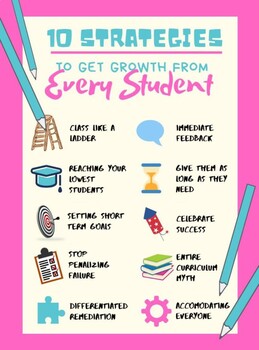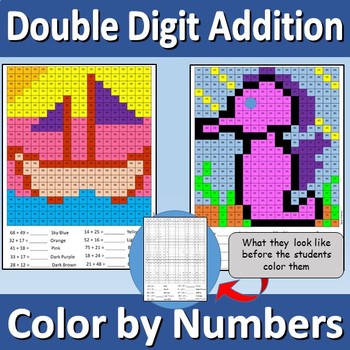
Grading papers can be time consuming and exhausting. Not to mention that when it takes a long time to grade and return, that reviewing homework often loses its impact as it is far from the students’ minds.
I have a strategy that I use in my classrooms that saves me time and allows me to give my students immediate feedback.
I need to stress that there are a few practices I implement in my teaching philosophy to help my students learn math.

1) Immediate Feedback
If students are doing work and they don’t know that they are doing it incorrectly, you are actually reinforcing a bad habit. On the other hand, if after a student does a problem and is immediately made aware that they did it incorrectly, they now have the opportunity to learn from that mistake.
2) Not Penalizing Failure
Mistakes are part of the learning process, and can be great teachers. But too often in academia, we penalize our students for making them. This discourages creativity and experimentation. It also creates resentment towards the subject and the teacher.
If students are allowed to make mistakes, and made aware when they make them, they are more likely to learn from their mistakes and master what’s being taught.
3) Not a Lot of Homework
I don’t assign a lot of homework for many reasons. For starters, cheating is too easy. There are apps that will solve problems just by pointing the camera phone at it or students can send pictures on their smart phones of their work to each other.
Beyond this, many of my students come from less than ideal home situations. So I don’t want to further penalize them for their circumstances. Furthermore, I value family time, and want my students to not be burden by homework when they get home – I want them enjoying being a young person or spending time with their family.
Also, if you assign a student a lot of homework, and he does it all incorrectly without being made aware of the mistakes, there is not much value in the assignment.
The list goes on, but the point is that I don’t assign a lot of homework….
But when I do assign homework, there is one strategy that I will often use to make grading quick and easy, and gives me the opportunity provide instant feedback.
The Strategy
When students enter the classroom, there is a ‘Do Now’ (sometimes called a ‘Bellringer’) on the board as well as a reminder to put their homework on their desk. As students are completing the Do Now, I take roll, and then walk around the classroom looking at everyone’s homework. In my hand is a piece of paper to write on (or preferably a roster) which I make notes on as I check students’ work.
As I browse students’ work, I am looking for a few things. First, I check that it is completed. Second, that they showed their work. Third, there will be a few problems that I am especially checking to see if they got the correct answer.
As I check each students’ work, I try to give them some quick feedback, and then I write their score on my paper as well as any pertinent notes (which I will include in the gradebook).
If the student did all the problems and showed their work, and got those problems I checked correct, I will give them an A+. If they got those problems incorrect, I still might give them a 100% for the assignment, or I might knock it down to a 90%.
If they did all of the work, but the work that they showed is lacking I will give them a B, or possibly a C if it is really poor or they did not do all of the questions. After that they can get a 50% for doing some work or a 0 for not doing their homework.
Then we go over the work together, as a class, so that everyone can learn from their mistakes – or be encouraged by their correct answers.
This methodology conveys to the students that I value the process of doing the work and putting forth a good effort more than them getting all the correct answers (though that is the goal). It also allows me reinforce the ideology that we can learn from our mistakes and it’s okay to make them.
But most importantly, this method allows me to review homework the very next day, in class, with all the students, and it saves a lot of time.
After a little bit of practice, I can get to all my students before the bellringer is complete.

A WARNING
As with all things, you can’t do them all the time or students will take advantage of the situation. So make sure that every now and again, you collect the homework and return it with a grade for accuracy. Otherwise, students will cut corners and your homework assignments will lose its effectiveness.
THE ALTERNATIVE
Often, when I collect the homework to grade for accuracy, it takes me at least a day to grade. Then I return it the next day (at best). Which means over 24 hours has passed since the students did the assignment. While we understand why this happens, it does minimize the impact of reviewing the work in class because it was so long ago. The review will have a greater impact on your students if you can do it the next day in class when it will be fresh in their minds.
CONCLUSION
So that’s my time-saving teacher hack. Grade it in class, while they do the Do Now, skimming everyone’s paper for completion and effort (and occasionally for correct answers). Then, review the work in class so you show students if they got the correct answers and how to do the work.
What do you think? Could this method work for you? What changes would you make to make the technique more effective?


If you found this helpful, share it with your friends!




